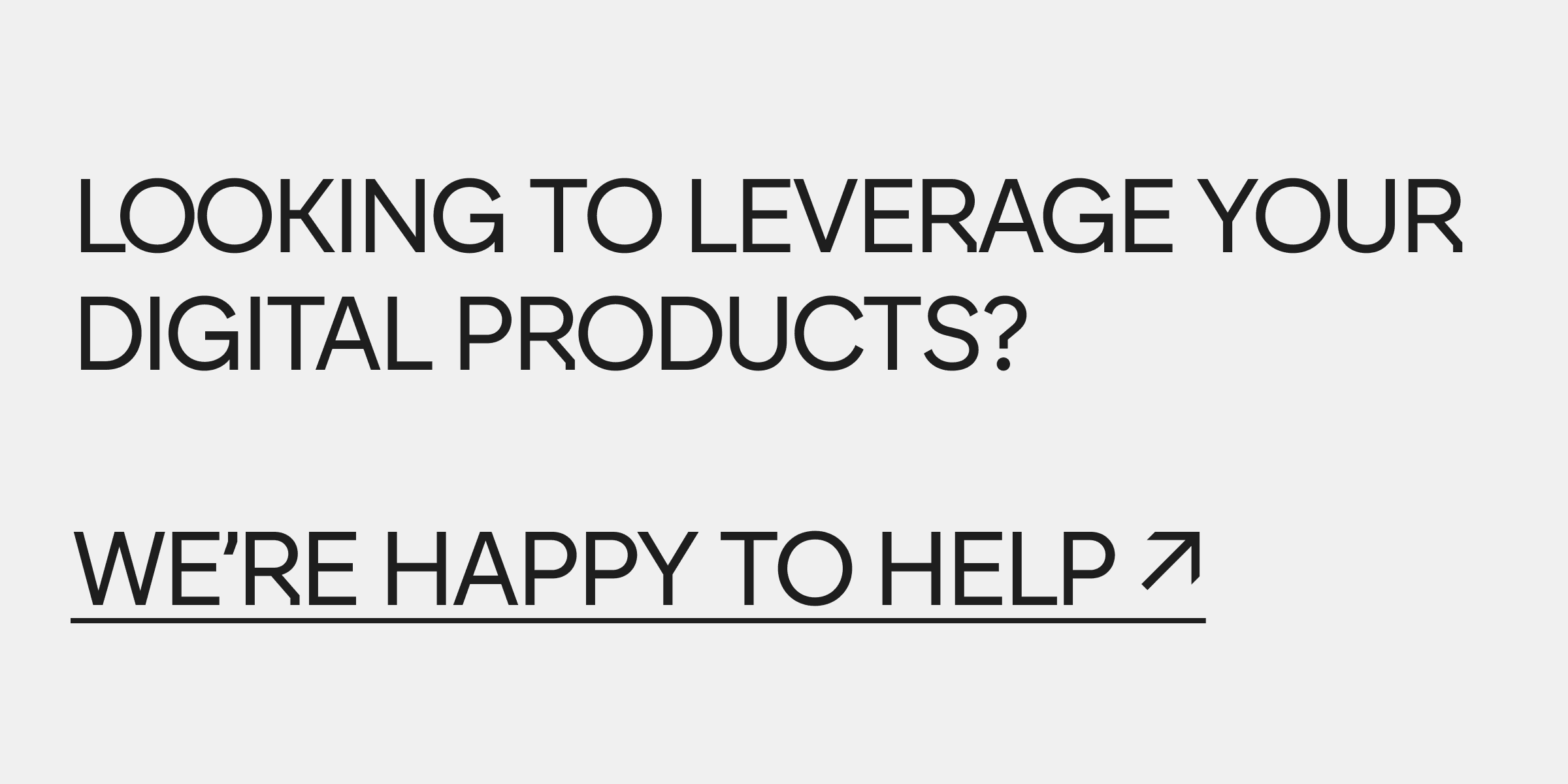Are you designing a website? In such a scenario, it is easy to focus on aesthetics instead of functionality. Does a particular icon look alright? Will the shade of green you picked really work? Should you use that image on the main page, or would it look better someplace else? Nevertheless, effective website design is about more than just the look of a website. It is about its usability and the user experience it provides.
Unfortunately, studying each and every aspect of both user-friendly and attractive website design could end up being a bit confusing and time-consuming. If you do not have the time and energy to deal with that, we are here to lend you a hand! Below, you will find a list of web design best practices. Check it out, use it as a point of reference, and start designing amazing websites today!
How Can Good Web Page Design Impact User Experience and Business?
Before you start, you might be wondering what is so important about a website's design. Why should it be good in the first place?
To begin with, you should start perceiving a website as a valuable promotional tool. It is like a modern business card. If everything that is on it, from landing pages to the smallest visual elements and the search bar, looks visually appealing, it is bound to attract a larger number of customers than a poorly designed website. It will make your target audience perceive you as more professional and trustworthy.
In addition, a lovely website appearance can help make a company stand out from the competition. If it is characterized by not only eye-catching design elements and color schemes, but also smooth user experience and superior performance, it is guaranteed to leave a lasting impression. Consequently, it can help you create a strong visual brand identity and result in better brand awareness among your potential customers.
Having a well-designed website can also boost the effectiveness of your marketing campaigns. No matter whether you are investing into paid advertisements or attracting organic traffic, your website's homepage and individual landing pages are where the people you are targeting are going to end up at. With a unique and well-designed website, you should be able to convert a larger number of these website visitors into loyal customers.
It is also worth noting that good website layout can make you rank higher in search engines. Your site's SEO, search engine optimization, is heavily dependent on how your website is structured. It takes into account a number of website elements, such as social media links, web accessibility, and site speed. The better a website's design, the easier it will be to make it rank higher.
Learn more about search engine optimization by reading our guide to preparing a website for SEO.

Last but not least, logical web design makes a website easier to navigate. It is especially important for companies that specialize in selling goods online. Their site visitors go to their websites in search of a particular product or product type. If they are unable to find it in a few seconds, they are not going to buy it. On the flip side, if finding it is quick and intuitive, they are more likely to make a purchase. In this particular case, the end result of good web design is an increase in conversion rate and profitability.
Read more: Redesign This Page First To Double Your E-Commerce Conversion Rate!
What Do Customers Want To Find on Your Website?
As we have already mentioned, if website visitors are checking out an online store, they probably want to find a specific product. The easier it is to find, the more likely they are to buy it. However, online stores are not the only website type that can benefit from web design best practices. A regular company website should be just as pleasant and easy to use.
The reason for that is simple. A company website contains information on what a company is about, where it is located, what it does, and how to contact its representatives. Providing potential customers with an easy way to find such information quickly is key to owning a successful business. Without it, they might start thinking that you are suspicious and untrustworthy.
What Are the 7 Cs of Website Design?
The website design best practices that we are going to outline later are based on the seven principles of the website design process. The said principles come in the form of seven words, namely consistency, connection, commerce, content, compatibility, community, and customization. If you want to learn more about website design best practices, reading up on these principles is a great place to start.

Consistency
When designing a web page, it is important that you are consistent. The visual elements you create during the design process should have the same look and feel as your company's other visual elements. You should also keep your brand's color scheme in mind. Do not ignore it, and use it throughout the entire site. Any other color schemes will look weird and out of place.

Connection
Pay attention to internal and external linking. Both types of linking are great for SEO, as they help search engines determine what a website is about and whether it is a credible source of information. If you are not sure how these types of linking differ and how they work, no worries. Let us explain!
Internal linking is about connecting different pages of one website with one another using links. For instance, in the article you are reading right now, you will find links to other articles of ours. It is a great example of internal linking. External linking, on the other hand, is about links to external websites. To give an example, imagine that you are reading a New York Times article about the results of an experiment. The results were published in a scientific journal. The article author put a link to that scientific journal's website in the article. That is more or less what external linking looks like.
Commerce
If a website is meant to act as an online store, it should come with functionalities necessary for initiating and processing transactions. In addition, its designers and developers should put an emphasis on data security by equipping it with various security measures, such as two-factor authentication.
Content
Content is a key part of any web page. It is what showcases a company's mission and offering, and what wins potential customers over. With that in mind, pay attention to the content you post. Whether it be an attention-grabbing landing page or an informative pricing page, it should be getting a certain message across. Better yet, it should be doing so in an easy-to-understand, accurate, and interesting way. It is especially important when it comes to text-heavy pages. You do not want a visitor to lose interest in that page after just a few seconds. Instead, you want to make that person feel compelled to keep reading.
Compatibility
As the name suggests, compatibility is about making sure that a website is compatible with the latest browsers and mobile devices. That way, a greater number of online visitors will be able to check it out. Needless to say, it is a pretty important aspect of website design. After all, you do not want to lose potential customers just because your website does not load on a specific device or in a certain browser.
Creativity
When it comes to website design, creativity is incredibly important. It is what allows a web designer to create a website that is both functional and user-friendly, but also unique and memorable. Without it, you might find it difficult to come up with an attention-grabbing color scheme or a logical visual hierarchy, among other things.
Customization
Last but not least, make sure to invest in customization. In a world that increasingly operates online, potential customers that you are trying to appeal to have a wide range of needs and preferences related to browsing the internet. If possible, make sure that any website you design can, to a certain degree, be customized in accordance with the said needs and preferences. Something as simple as implementing dark mode could help you appeal to more online visitors than you might think.
What Are the Best Practices for Designing a Website?
There are quite a few website design best practices that you should be aware of. In our opinion, the most important ones out of the bunch include simplicity and cleanliness, being able to incorporate visuals effectively, and something that web designers refer to as responsive design, to name a few. More on that below!
Simplicity and Cleanliness
A website acts as a digital business card. It gives businesses an easy way to provide potential and existing customers with valuable information about different products and services. To get that information across, you need to minimize the number of design elements that serve no purpose. The more such elements you incorporate into your website design, the more overwhelming the entire website will become. As a result, the people who are visiting it are bound to find it difficult to find what they are looking for.
To put it another way, when it comes to user experience and functionality, simplicity is a web designer's best friend. You can make a website simpler by doing the following things.
-
Use a maximum of five colors in any color scheme. A larger number of colors will make your website look weird and chaotic. It might also prevent you from developing a recognizable and established brand identity.
-
The typefaces you opt for should be highly legible. With that in mind, do not go with a typeface that is overly artsy or minimalistic. As for its color, choose one that stands out against your website's background.
-
Use graphics for a reason. Putting graphics in each and every section of your website will make it look very crowded. It might also have a negative impact on that site's performance. For that reason, you should only use graphics when doing so has an actual purpose.
-
Take advantage of white space and negative space. White space and negative space are what appears in-between graphics and other elements of a website. When used effectively, they can help prevent it from looking chaotic and cluttered, as well as draw visitors' attention to important clickable elements, such as call-to-action buttons.

Responsiveness
Next, you should make sure that your website adheres to the principles of responsive design. What does that mean, though? To put it simply, your website should come in two versions, namely a desktop site and a mobile site. The reason for that is simple. Millions of online visitors interact with websites using mobile devices. If your website does not look right on such devices, you are bound to lose quite a few potential customers.
Right now, numerous website design experts start the design process by designing the mobile version of their website. Such an approach is known as mobile-first design. By using it, you are guaranteed to develop a responsive website that is perfectly aligned with responsive design best practices.
In addition, you should always check what your website looks like on mobile devices. There are quite a few pieces of software out there that make doing so incredibly easy, such as Ranorex or Perfecto. While it might not seem that important, it really does pay off. It gives you an easy way to nip potential mobile compatibility issues in the bud.
Easy Navigation
When visitors interact with a website, they are likely to be looking for a product, a service, or a particular piece of information. It is in your best interest to make finding each of these things intuitive and efficient. It is bound to have a wide range of positive effects on account website visitors statistics, such as a decrease in the so-called bounce rates and an increase in conversion rate, among other things.
On top of that, easy navigation can help enhance user experience. When a visitor is unable to find everything they are looking for with ease, they are likely to end up feeling frustrated or even angry. On the flip side, browsing an intuitive website can evoke positive feelings, such as satisfaction or curiosity.
If that is not enough, it is worth mentioning that site navigation can impact search engine optimization. Remember, search engines value top-quality user experience. If they find that everything on your website is logically interconnected and easy to find, they are likely to make it rank higher on search engine results pages.
What Website Elements Contribute to Good Navigation Design?
There are quite a few elements of a website that contribute to a good navigation design. For starters, you should provide users with a search bar and an easily visible menu bar. A search bar is useful if a website is quite big and contains a wide range of pieces of content or products. A good example of such a website would be a big online store or an online encyclopedia.
Other than that, you should avoid implementing overly complicated navigation structures. Hiding a piece of information under four or more layers of information is not an user-friendly approach to website design. Finally, use easily recognizable symbols for icons. For instance, the search function is commonly associated with a magnifying glass.
Accessibility
Have you thought about whether your website is accessible? If not, you definitely should! There are quite a few people with disabilities who might be looking for a company like yours, but are unable to access your website due to how its structured. For instance, it might be that they cannot navigate it using only a keyboard or that the important images on it have empty alt attributes.
While designing an accessible website might take some time, it is going to benefit both you and your customers. Your customers are going to appreciate the fact that you are inclusive. This, in turn, should have a positive impact on your brand image.
If you do not know where to start, have a look at the Web Content Accessibility Guidelines. Produced by the World Wide Web Consortium, they are a set of recommendations that you can use to make your website as accessible as possible. You should also make use of testing tools recommended by the Web Accessibility Initiative. By doing so, you will be able to identify accessibility issues that are present on your website quickly and effectively.
Read also: European Accessibility Act (EAA) in Web Design: Requirements & Guides
How Can Web Designers Implement Accessibility in Their Web Page Design?
Most importantly, you should make sure that the images on your website have proper alt attributes. Otherwise, people who are using screen readers to browse the internet might not be able to figure out the context behind certain sections of your website. You should also check whether your website can be browsed using a keyboard alone, and ensure the animations and videos that are on it will not trigger photosensitive epilepsy. In case you would like to learn more about accessible website design, check out our article about design for neurodiversity.
Consistent Branding
One of your main goals when creating a website should be to maintain consistent branding. Brand identity consists of many important elements, from the color scheme you are using and your logo to the way you communicate with your target audience. It is what makes potential and existing customers remember you and perceive you as professional and trustworthy.
Think about it. Each and every serious company out there is likely to have clear brand guidelines that dictate how it is perceived by its target audience. Their logo was designed by an experienced designer, and their website's color scheme is supposed to make you think of very specific things, such as modernity or trustworthiness. If your logo changes every month and your website does not evoke that feeling of professionalism and credibility, how are people going to trust you?
How Can Designers Achieve Consistency in Their Web Design?
To achieve consistency in your web design, it is important that you adhere to brand guidelines. If your company or the company you are designing a website for does not have such guidelines, it is recommended that you come up with them as soon as possible. Brand guidelines outline everything we mentioned above, such as what colors to use in digital marketing spaces and what font to put on company web pages. Without them, your design is unlikely to end up being truly consistent.
Learn more by reading our article about why your business needs consistent branding.
Effective Use of Color and Typography
Not all websites take full advantage of color and typography, which is a shame. These two things have a huge impact on the user's perception of your company and the way they interact with your website.
A specific color scheme can be used to evoke specific feelings. How does it work? Well, imagine that a company that specializes in innovative technologies has a website. Its design features shades of blue and purple. These colors are meant to literally show you that the company specializes in technology, which is commonly associated with the color blue. What is more, both of these colors are often associated with modernity and creativity.
As for typography, it can also help evoke certain feelings. Again, let us use a real life example. If you are selling antique furniture, you might use a serif font to make your website visitors associate your brand with adjectives like vintage or retro.

Using colors and typography effectively is the key to designing an attractive and modern website.
What Are Some Best Practices for Using Color and Typography in Web Design?
Remember, you do not have to use twenty different colors to make a website appealing. In fact, the more colors you use, the more chaotic and weird the entire design is going to be. Instead, stick to a maximum of five different colors.
When it comes to typography, put functionality and legibility above aesthetics and minimalism. A website is an online platform meant to inform potential customers about your business. If they can hardly tell what is on that website, it is not going to fulfill its main purpose.
You might also be interested in our article about web design and putting values over aesthetics.
Compelling Call-to-Action (CTA)
You have a website for a reason. It might be that you want to attract potential customers and get them to purchase a particular product or service. It might be that you are a non-profit organization and want online visitors to donate to a worthy cause. Either way, you want them to complete a certain action upon visiting your website. The easiest way to make it happen is to use a compelling call-to-action.
A call-to-action can take many forms. If you are visiting a website of an online store, it might come in the form of a button that says buy now. In case you are visiting a website of a game that is about to come out, its developers might encourage you to download its demo version with a call-to-action button that says download now.
Of course, these are just two examples of a call-to-action. They can get much longer and more creative depending on what you are selling, who you are trying to reach, and what action you want them to take.
Why Is a CTA Important?
A CTA can help you with two important metrics. The first one is customer engagement. A compelling call-to-action will grab people's attention and get them to, for instance, subscribe to your newsletter, fill out your survey, or read the article that you have just published. The second one is conversion rate. A short call-to-action could end up being that final push that a website visitor needs to make a purchase. If it is effective enough, it might lead to a massive increase in your website's conversion rate.
How Can Web Designers Create Effective Calls-to-Action?
In order for a call-to-action to be effective, it has to be clear and contain an action word, such as download, read, subscribe, or buy. Moreover, it should evoke a certain feeling, such as curiosity, urgency, or anticipation.
Once you implement a given call-to-action, it is recommended that you verify its effectiveness and test it together with another call-to-action. By performing such a simple A/B test, you will be able to see what kind of call-to-action truly resonates with your target audience. This, in turn, will help you maximize your conversion rate.
Implement Web Design Best Practices and Achieve Business Success!
In conclusion, if you want your website's design to work in your favor, you should keep the above-mentioned web design best practices in mind. While it will take some time and effort, it is definitely going to pay off. It will make it easier for you to launch a top-quality website that will attract online visitors, convert them into loyal customers, and keep them engaged whenever they come back.
In case you feel like implementing some of the best practices we listed is going to be difficult, do not worry. Our world-class team would be happy to partner with you and help you design a truly amazing website. So, get in touch with us today, and let's create something amazing together!








